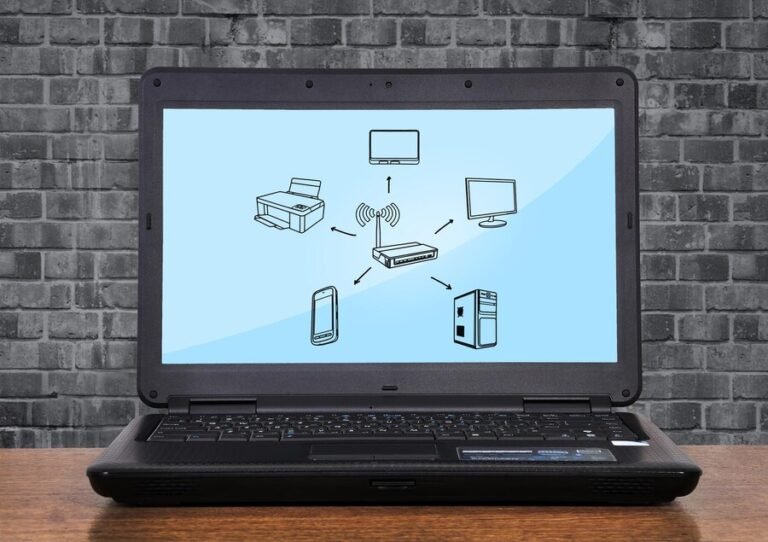The Dell Dimension L800r 800eb MHz isn’t just a desktop computer—it’s a nostalgic reminder of an era in computing during the early 2000s. Though it might lack the sleek designs and lightning-fast speeds of today’s machines, it was a powerhouse that brought technology to homes and small offices alike. This post dives into everything you need to know about this classic system, from its specs and user experiences to how it compares with today’s technology and tips to keep it running in the 2020s.
If you’re a Dell user or a tech enthusiast intrigued by computing history, read on!
The Dell Dimension L800r 800eb MHz in Context
When the Dell Dimension L800r 800eb MHz series debuted, it was at the forefront of personal computing. The early 2000s saw rapid advances as PCs became central to daily life, from browsing the nascent internet to gaming and productivity. The Dimension L800r series was designed to meet those needs, offering accessibility and performance in one compact package.
For many, it might’ve been their first computer, a trusty office companion, or the centerpiece of hours of gaming—a true product of its time.
Technical Specs Breakdown
The Dell Dimension L800r 800eb MHz might seem basic by modern standards, but at the time, its specifications were impressive. Let’s take a detailed look:
1. Processor
- Intel Pentium III 800EB MHz: This single-core processor was built on Intel’s innovative 130 nm architecture, offering decent speed for the early 2000s.
2. Memory (RAM)
- Base RAM: Typically shipped with 64MB to 128MB SDRAM (expandable to 512MB). This was sufficient for running Windows 98, ME, or Windows 2000.
3. Storage
- Hard Drive: It featured 20GB to 40GB IDE hard drives, providing ample space for documents, photos, and even some games of that time.
4. Graphics
- Integrated Intel 810E Graphics or ATI Rage Graphics card. While not suitable for modern gaming, it could handle basic games and visual tasks with ease.
5. Other Features
- Connectivity: Included Ethernet ports and dial-up modem support for online access. Remember the iconic “dial-up connection noise”? This PC delivered those memories.
- Optical Drive: CD-ROM or optional CD-RW drives for software installations and media playback.
The device was reliable, versatile, and customizable, catering to users who needed both work and entertainment on the same machine.
The Evolution of Computing Since
Looking at the Dell Dimension L800r 800eb MHz through today’s lens highlights just how far technology has come.
Then vs Now
- Performance
The Pentium III’s single-core design pales in comparison to today’s multi-core CPUs like Intel’s 13th Gen i9 or AMD’s Ryzen series. Tasks that took minutes in 2000 now take seconds.
- Memory and Storage
Modern PCs feature up to 64GB of DDR5 RAM and SSD storage as large as 2 terabytes—offering 100x the speed and space of the Dimension’s setup.
- Graphics
While the Dimension’s graphics card was basic, today’s high-performance GPUs allow for 4K gaming, video rendering, and VR experiences—luxuries unthinkable at the time.
- Physical Design
The Dimension’s bulky tower design contrasts sharply with today’s slim laptops and compact desktops. Portability, which was not possible back then, is now the norm.
Despite these advancements, there’s something charming about the simplicity and reliability of older systems like the Dell Dimension L800r.

User Experiences and Community Feedback
The Dell Dimension L800r 800eb MHz has a special place in the hearts of those who used it. Here are a few key highlights shared by the Dell community:
- Performance and Reliability
“It was my first family computer. It handled everything from school assignments to early internet browsing without breaking a sweat.” – Carly, Technology Enthusiast
- Durability
“Even 20 years later, I’ve managed to resurrect my Dell Dimension for legacy software. It’s still kicking!” – Mark, Programmer
- Gaming and Nostalgia
“I played everything from SimCity 2000 to the original Counter-Strike on this machine. Those were the days.” – Rob, Retro Gamer
The memories connected to this PC make it more than just a device—it’s a piece of personal and tech history.
Tips to Maintain and Upgrade Your Dell Dimension L800r
Want to keep your Dell Dimension L800r operational today? While it was built for earlier times, here are some tips to extend its life and usefulness:
1. Upgrade the RAM
The Dimension supports up to 512MB SDRAM. While modest, upgrading to the max allows better performance when running lightweight modern software.
2. Install a Lightweight OS
Replace older operating systems with lightweight Linux distros like Lubuntu or Tiny Core Linux, perfect for older hardware.
3. Replace the HDD with an SSD
Upgrading to even a small 120GB SSD vastly improves boot time and overall performance.
4. External Peripherals
Use USB hubs to connect external storage, modern keyboards, or even newer wireless internet adaptors.
5. Cleaning and Maintenance
Ensure the internal fans are clean, and consider replacing thermal paste on the CPU to keep it cool and functional.
By taking these steps, you can breathe new life into this old machine, whether for retro gaming or simple tasks.
The Legacy of the Dell Dimension L800r
The Dell Dimension L800r 800eb MHz remains a nostalgic gem in the computing world—a testament to the ingenuity of early PC designs. For many, it laid the foundation for years of tech exploration and set the standard for practical and affordable computing.
